Peristaltic Pump

What is a Peristaltic Pump?
A peristaltic pump is a type of positive displacement pump used to transfer a wide range of fluids at flow rates from a few milliliters per hour to several cubic meters per minute. This technology has been developed and refined over the past century. In these pumps, the fluid is trapped inside a flexible tube and flowed through a series of rollers driven by an actuator, usually a rotor.
Due to the contact between the fluid and the inner surface of the tube, peristaltic pumps exhibit low amortization. This makes them ideal for transferring corrosive fluids, abrasive slurries, and shear-sensitive fluids. Additionally, since the fluid does not come into contact with the external environment, preventing contamination, these pumps are suitable for pumping sterile fluids. Peristaltic pumps find widespread applications in various industries, including food and beverage, pharmaceutical, chemical, medical, and mining.
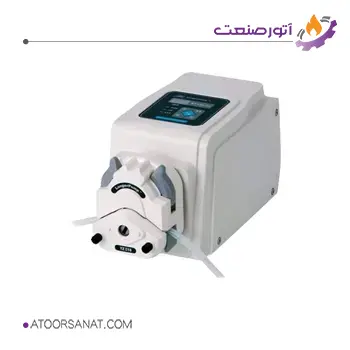
Features:
- Country of origin: China
- Speed range: 1 to 1000 rpm
- Applications: For transferring various substances such as blood, acids, bases, solvents, resins, detergents, pulpy fruit juices, etc.
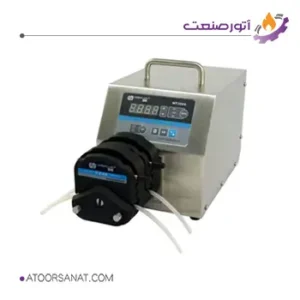
Features:
- Country of origin: China
- Flow rate range: 0.00011 to 6000 ml/min
- Body material: Stainless steel, ABS plastic
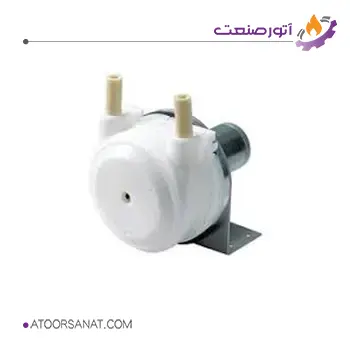
Features:
- Country of origin: Germany
- Maximum pressure: 1 bar
- Flow rate range: 50 to 3000 ml/min
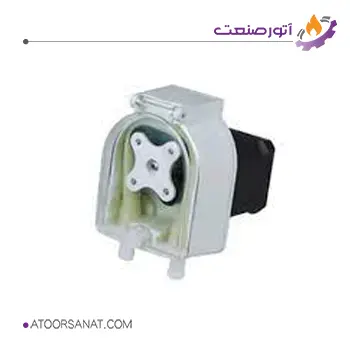
Features:
- Country of origin: China
- Body material: PES polymer
- Maximum speed: 300 to 600 rpm
- Flow rate range: up to 2280 ml/min
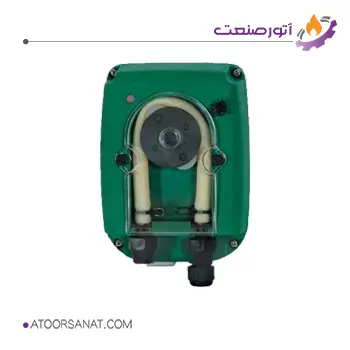
Features:
- Country of origin: Italy
- Maximum pressure: 1 to 3 bar
- Pump head material: PP
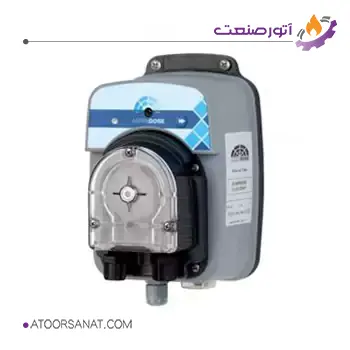
Features:
- Country of origin: Turkey
- Pressure: 0.5 to 3 bar
- Body material: PP
How a Peristaltic Pump Works?
A peristaltic pump operates on the biological principle of peristalsis. This principle involves the involuntary contraction and relaxation of muscles in the digestive system (esophagus, stomach, and intestines) to propel food. Similarly, a peristaltic pump propels fluid by compressing and decompressing a flexible tube. As the pump’s rotor turns, rollers or shoes press against the outer wall of the tube, creating a wave of compression that travels along the tube’s length. This wave-like motion creates a suction at the inlet, drawing fluid into the tube, while simultaneously propelling the fluid towards the outlet.
The image shows a schematic of a peristaltic pump during a 360-degree rotation of the rotor. The green portion represents the fluid being sucked in, the blue portion represents the fluid in motion within the pump, and the red portion represents the fluid being discharged.
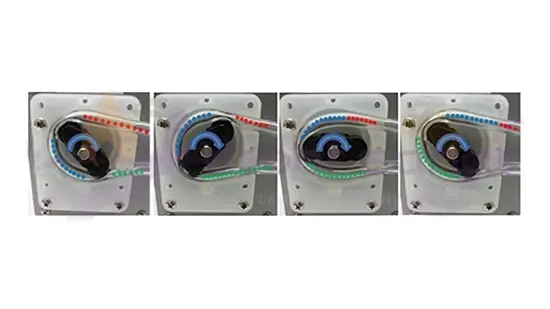
Types of Peristaltic Pumps
Peristaltic pumps can be categorized into two main types based on their mechanism and operating pressure: tube pumps and hose pumps.
1. Tube Pumps:
In tube pumps, rollers and standard tubes are used for lower pressures (below 12 bar). Fluid is transferred by the rotation of the rotor and the resulting pressure exerted on the tubes by the rollers. This industrial equipment typically has a minimum of 2 rollers with a 180-degree angular difference and a maximum of 8 to 12 rollers. Increasing the number of rollers increases the frequency of the fluid pulse at the outlet, thereby reducing the pulse amplitude.
A negative aspect of increasing the number of rollers is that the oscillating pressure on the tube increases proportionally, reducing the tube’s lifespan due to the induced stress. Low power consumption, low starting torque, and easy maintenance due to the lack of lubrication are advantages of this type of peristaltic pump.
Obstruction and fluid transmission in the tube changes with its wall thickness. Depending on the design, rollers can be fixed-occlusion or mounted on springs. In the fixed-occlusion type, rollers have a fixed position during rotation, and the occlusion remains constant with the pressure of the tube during fluid pumping. In the other type, the stress on the tube is a function of the spring constant. In other words, the spring is designed to overcome the resistance of the tube wall and fluid pressure.
2. Hose Pumps:
Instead of rollers, these peristaltic pumps use shoes and reinforced hoses for higher pressures (up to 16 bar) and heavy-duty applications. The casing of this industrial equipment is filled with a lubricant to prevent wear on the outer surface of the hose and for cooling. The stiff material and thick walls of the hoses require more force and, consequently, more energy to transfer fluid compared to tubular pumps. If high operating pressure or pumping abrasive fluids is not required, tubular pumps are more suitable.
Components of a Peristaltic Pump:
A peristaltic pump consists of the following main components:
Drive or gearbox: This includes an electric motor to provide rotary power to the pump, a controller, display, inputs and outputs, and a housing.
Pump head: This is the rotating part of the pump attached to the shaft and has several rollers or shoes that create pressure on the outer part of the tube, causing a vacuum and pressure in the fluid, and consequently pumping the fluid.
Hose or tube: This is responsible for carrying and transferring the fluid.
Pump body: Typically made of stainless steel. In industrial models, cast iron is also used for the pump body, but in laboratory models, the use of dry plastic for the device body is possible.
Seals: These are used to prevent leakage of liquids, solids, and gases outside the system.”

